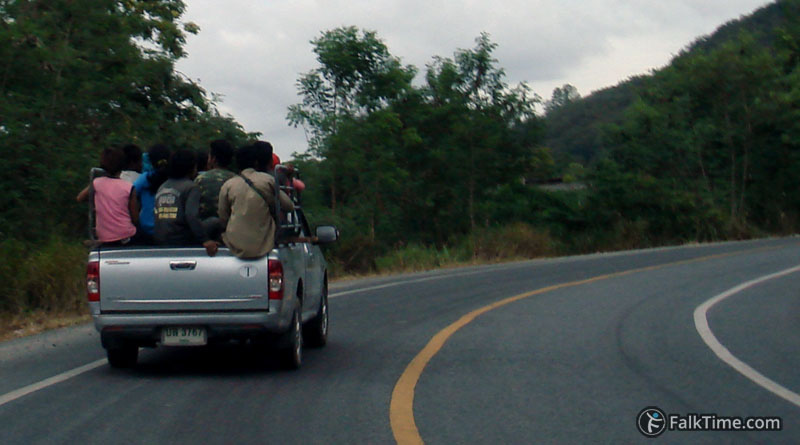Intercity transport in Thailand
There’s a lot of different intercity transport means in Thailand. In this article I will explain you everything you need to know to make your own journey to Thailand smooth and easy – all common traits of transport across the country. Details about specific airports, ports or railway stations you will find in «infrastructure» section of the city (province) you are interested in. About intra-urban transport in Thailand read here.
Contents
Airplanes
There’s a good choice of domestic flights in Thailand. A flight with low-cost airlines (like AirAsia, VietJet Air, Nok Air) can not only save your time but money also. In my opinion it’s better to spend 1 hour flying + formalities, rather than to waste a day in a bus or in a train (which can appear to be more expensive).
AirAsia offers also combined trips, f.e. flight to a city (mainland) + transfer (mini/bus) + ferry (to an island). Such trip will save your money, if you go to Ko Samui, as it is usually ~4 times cheaper than direct flight of non-budget airlines.
Anyway I would recommend you to start search for good prices with Aviasales or Skyscanner and only then check rates at airlines’ websites.
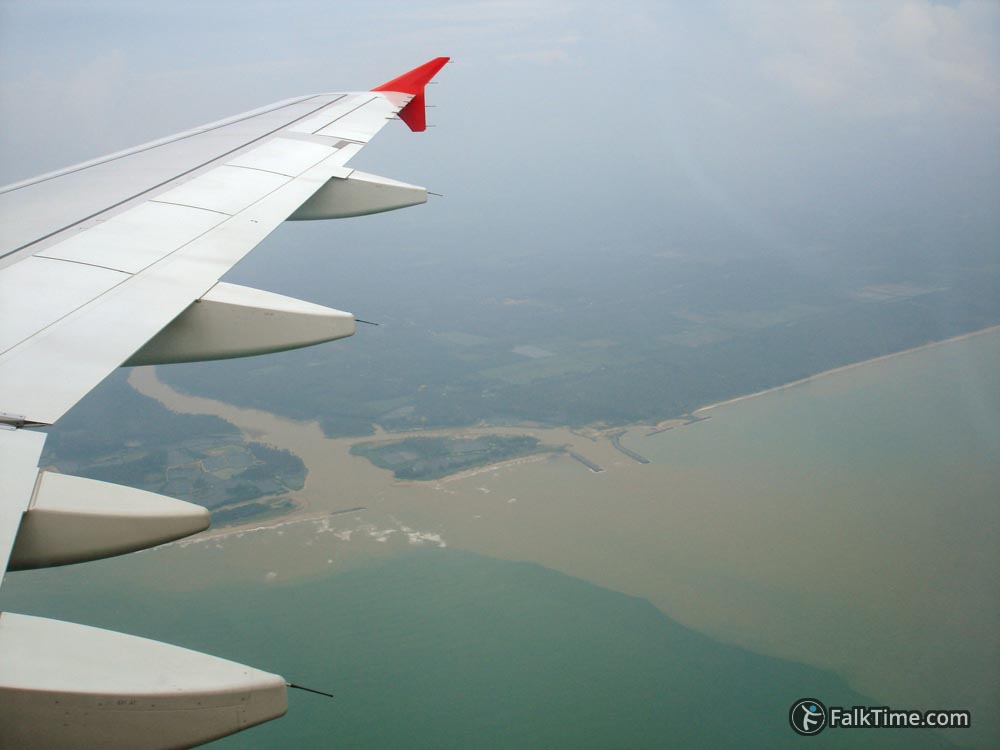
Trains in Thailand
After 4 rides I was fed up with Thai trains:
- Thai trains are more expensive than buses (1st and 2d classes);
- Trains are 2-3 times slower than Thai buses;
- Trains run less often than buses;
- Huge delays: none of those 4 brought me to my destinations on time. It is a permanent problem as most of Thai railways consist of single-track line. Delays may be even up to 3-4 hours.
- Some of trains consist only of 3d class carriages with no air-conditioning (+ their low speed = hell, or heat illness at least);
- Long distance trains cost more than a flight sometimes.
Just 2 examples to let you understand how it goes with prices and time concerning trains in Thailand:
- Bangkok – Chiang Mai (~700 km), train takes up to 18 hours and train ticket costs from 231 to 1653 THB. Aircraft takes 1 hour and price starts from 900 THB.
- Bangkok – Hua Hin (~200 km), bus takes 2-2,5 hours, train somehow takes almost 5 hours.
Train tickets
For a distance less than 300 km usually you can find train tickets in the same day at railway station. Anyway official website of Thai railways closes sale of tickets 2 hours prior to departure of train. There’s a little fee (20-40 THB), if you use credit card payment.
If you have just entered railway station and you feel that you are going to miss your train, if you stop by cashier, you can purchase a ticket by conductor of the train (for the same price).
Tickets can be bought in advance (sale starts 90 days before departure). You’d rather hurry up, if you want to travel in sleeping carriage of long-distance train (Bangkok – Chiang Mai, Bangkok – Suratthani, Bangkok – Nong Khai).
Note: you have to print e-ticket (there’s a possibility to do it in Hua Lamphong railway station in Bangkok, but I won’t state that every Thai railway station will offer you this option, so you’d rather print e-ticket in advance). Tickets are usually checked in 1st and 2d class before boarding, in 3d class after boarding.
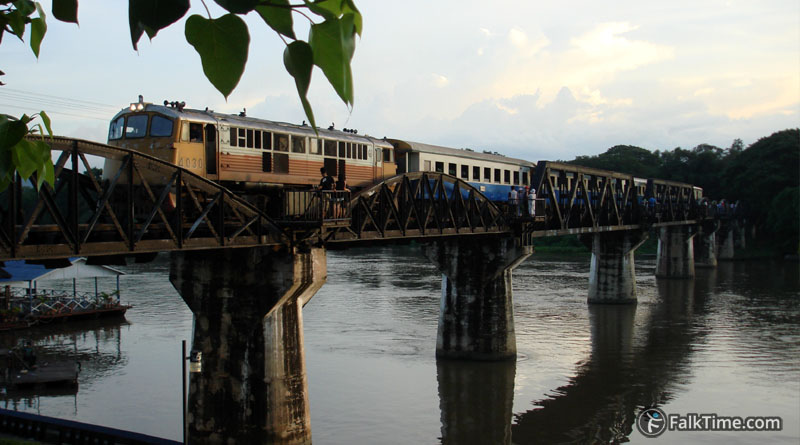
Except on distance the price of ticket depends also on carriage class and type of train (ordinary, express etc. – always pay attention at how long train takes to bring you to destination).
Children less than 100 cm high (under 3 y.o.) travel with you for free, if they stay at your berth. Children less than 150 cm high (under 12 y.o.) can get a discount up to 20%, depending on type of train and class of carriage.
Carriage classes
First class
Air-conditioned sleeping carriages that consist of 2-berth (rarely 1-berth) compartments. Each compartment is equipped with a sink and every berth has private curtain.
Second class
Air-conditioned (A/C) and non-conditioned (fan) carriages. They can be of sleeper or chair types. These differences affect the cost ofticket. Carriages are narrow (as Thai railways are of narrow gauge), so in sleeping carriages you will find either open compartments of 4 berths in each, or a carriage-long corridor with berths both sides along it. Lower berths can be transformed in 2 seats with a table.
Third class
Non-conditioned carriages with benches (less comfortable than chair cars). In long-distance trains provident Thais put mats that they have brought with and lay down on the floor.
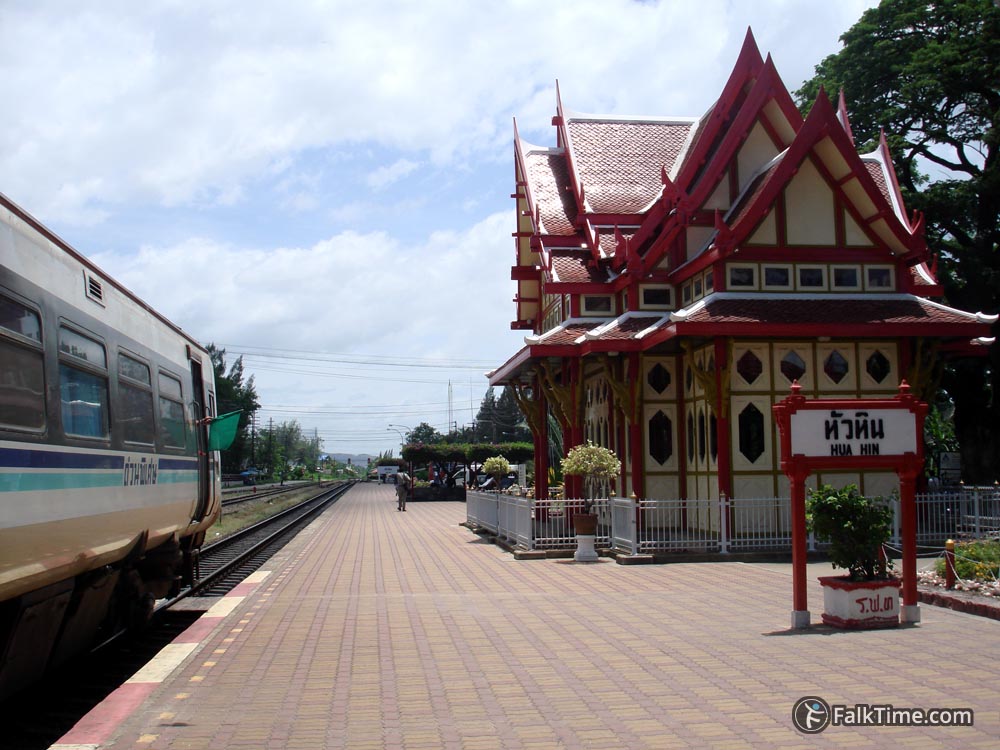
The price of 2d class chair carriage can contain a meal, even if you intend to travel less than 2 hours. Meal is served like in airplane. Long-distance trains have a dining car. You are free to ask conductor to bring you food from dining car.
Other useful information
– Lower berths cost more than upper berths. Upper berth is 5 cm smaller but it doesn’t affect much as Thai lower berth is ~190 cm.
– Bed linen in sleeping carriages is included in price of ticket. Usually this is the conductor who makes your bed.
– There are some women only carriages (a son less than 100 cm high is allowed there), while most of carriages are for passengers of all genders. If you are male and somehow you have bought a ticket to women’s carriage, you won’t be allowed to board and your ticket will be cancelled.
– Train toilets are not that clean as one would like them to be.
– Pets can only be transported in non-conditioned cars.
– There are some carriages suitable for disabled passengers, but one should specify this before purchasing train ticket. Anyway in such situations Thai people try to do their best to solve the problem.
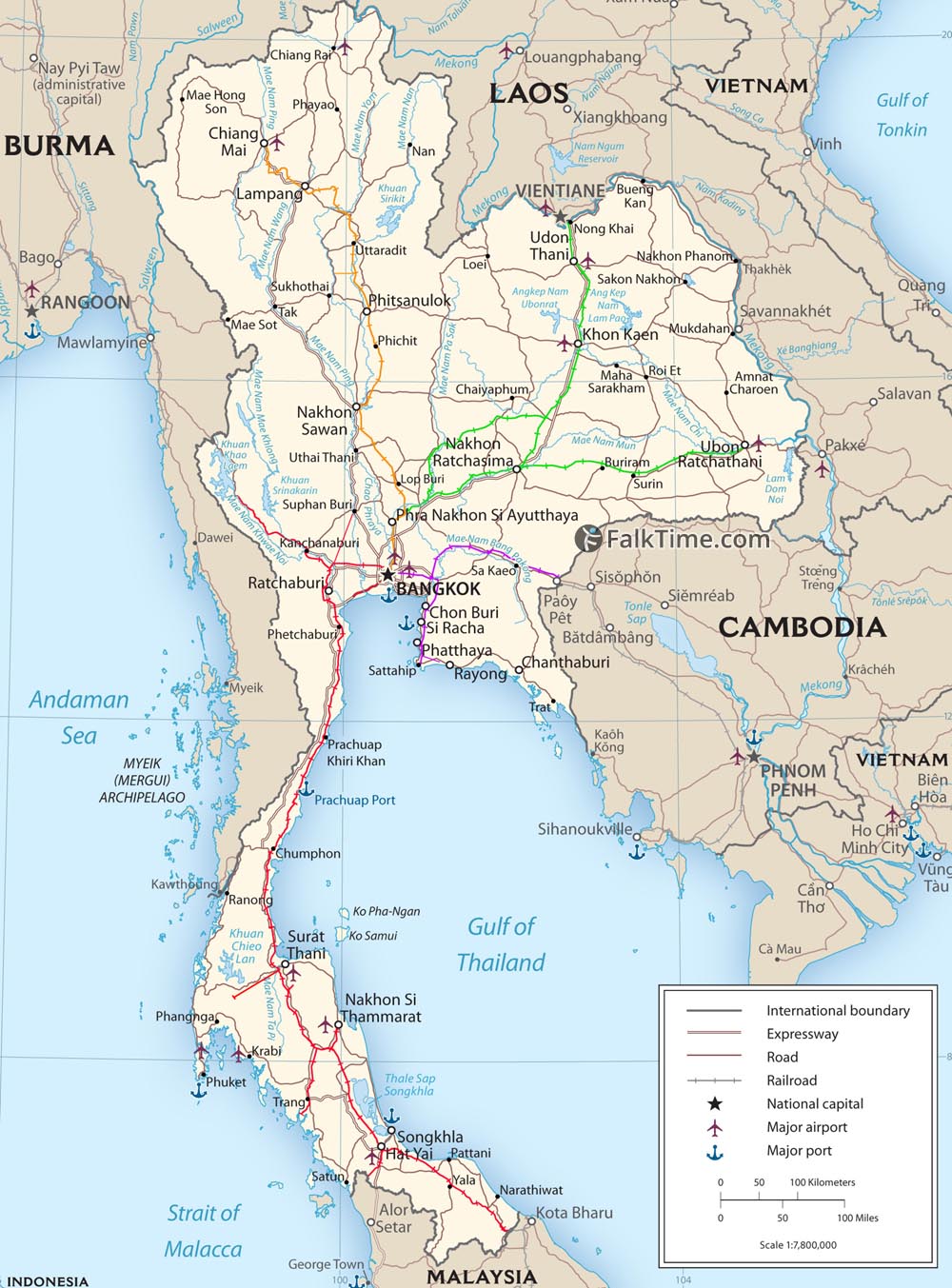
Luggage in Thai trains
If the luggage in chair car is stored next to passenger, in sleeper carriage it is stored in a special luggage compartment. That’s why some passengers secure their suitcases with bicycle locks to be sure that their luggage won’t be gone.
According to rules of Thai railways, a luggage of 1 passenger consists of 1 big suitcase and 1 small bag. Generally no one cares if you have 1 or 2 bags more. Also there’s a weight limitation depending on the class of carriage: 60 kg for the 1st class, 40 kg for the 2d, 30 kg for the 3d.
There are luggage storages on main railway stations of cities. Please note, that working hours of luggage storages = working hours of railway station. NOT 24 hours!
It is possible to take a bicycle or motorcycle with you, but you should ask about possibility in advance as not every train has a luggage compartment (vehicles can be transported only in these compartments). You need to arrive 1,5-2 hours before departure. Have some bubble film with you, if you want to avoid scratches. The price depends on weight of vehicle and can reach 1500 THB. Vehicle is loaded manually, so porters will be awaiting tips from you. In seldom cases your vehicle can travel in other train with luggage compartment, it means that you will need to meet that train.
Intercity buses in Thailand
Intercity buses are cheap and have almost no delays. Thai intercity buses perfectly suit journeys that are less than 5 hours.
Bus tickets
Bus tickets are usually bought at bus stations. There’s a Singapore website 12go.asia that offers Thai bus tickets online, but there are only several destinations and actually there’s no problem with bus tickets in Thailand, if we speak of distances less than 300 km. Because first of all, there are several bus companies (on main bus stations of cities) + there are many buses departing the same day, if we talk about popular destinations. Also some routes are duplicated by minibuses. At last you can visit bus station upon arrival to Thailand (town) and buy a ticket in advance.
Except simple tickets Thai bus companies offer combined trips (like bus+ferry) at reasonable prices. Also you will meet such combined offers at private cashier desks and tour agencies – well, it’s comfortable as one doesn’t need to think about how and where to change vehicle. Sometimes private agencies use buses of state companies, sometimes – buses of private carriers.
Remember to take your luggage from previous vehicle.
It’s an advice based on my experience – nobody warned me that minibus would bring me only to a ferry, so I left my bag under the seat of minibus. I understood that something went wrong only when I was welcomed to board a bus on the other shore. I told the driver about my missing bag. It was returned to me with the next bus. Don’t forget your luggage and don’t be sure that you get everything right – it’s better everytime to take the bag with you than to wait for its arrival.
Some words about long-distance buses: many travelers are interested in Bangkok-Chiang Mai route. Yes, even VIP-class buses can appear to be cheaper than a flight. But some people can’t sleep well in a bus, f.e. if I spend a night in a bus I will lose a whole day after it. Pay attention at the needs of your body and remember to check flight rates.
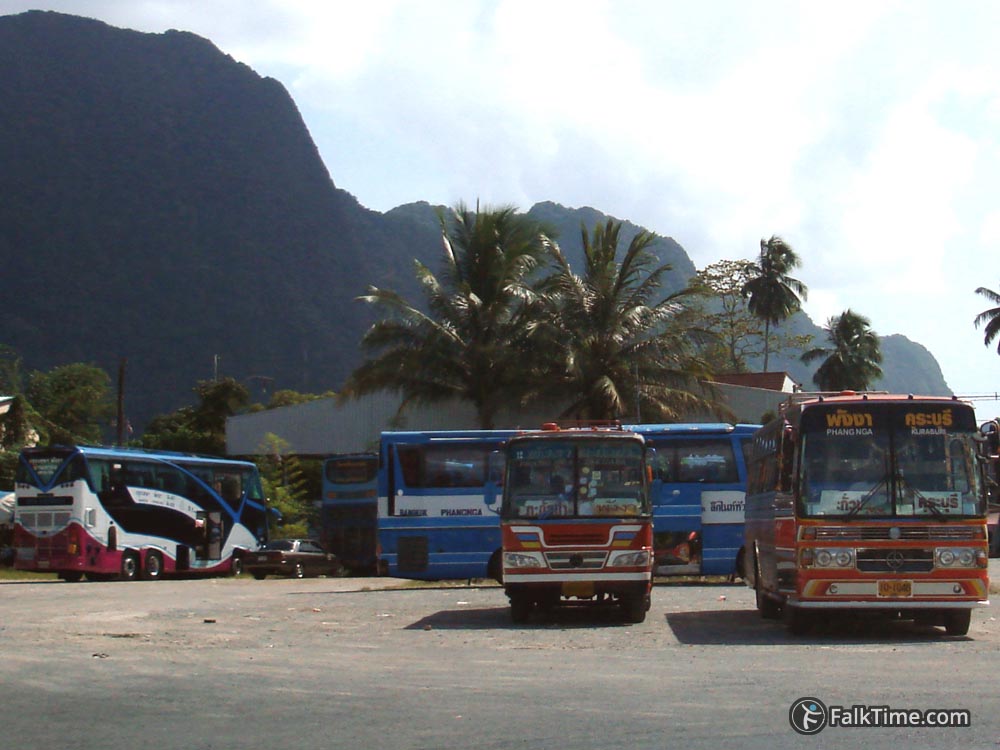
Classes, luggage and conditions in Thai buses
Intercity buses in Thailand are of different classes: VIP, 1st and 2d. Every bus company has its own position how any class should look like. The only thing that is guaranteed – 2d class buses have no toilet (these are the buses that cover most of 2-3 hour distances, f.e. Bangkok – Pattaya).
Long-distance buses of 1st and VIP classes are usually equipped with transforming seats. Any long bus trips are interrupted with a stop (to have a meal or/and to visit a toilet).
Most of buses are air-conditioned. While non-conditioned buses can be met in unpopular, “rural”, destinations (f.e. Kanchanaburi – national park “Erawan”).
Luggage is included in the price of ticket and it is carried in a luggage compartment. Some bus companies will give you a receipt upon taking your suitcase or bag to luggage compartment, but actually there’s not much control. I’ve read several complaints in Internet about stolen luggage during night long-distance bus trips – I can not prove or disprove this information, because I’ve never used night buses and all valuable things I always took with me as hand luggage.
According to rules one should fasten seat belt, but some of seat belts can be out of order. Nevertheless I would recommend fastening seat belt somehow, though for 10 years that I was using buses in Thailand all Thai drivers were driving very carefully.
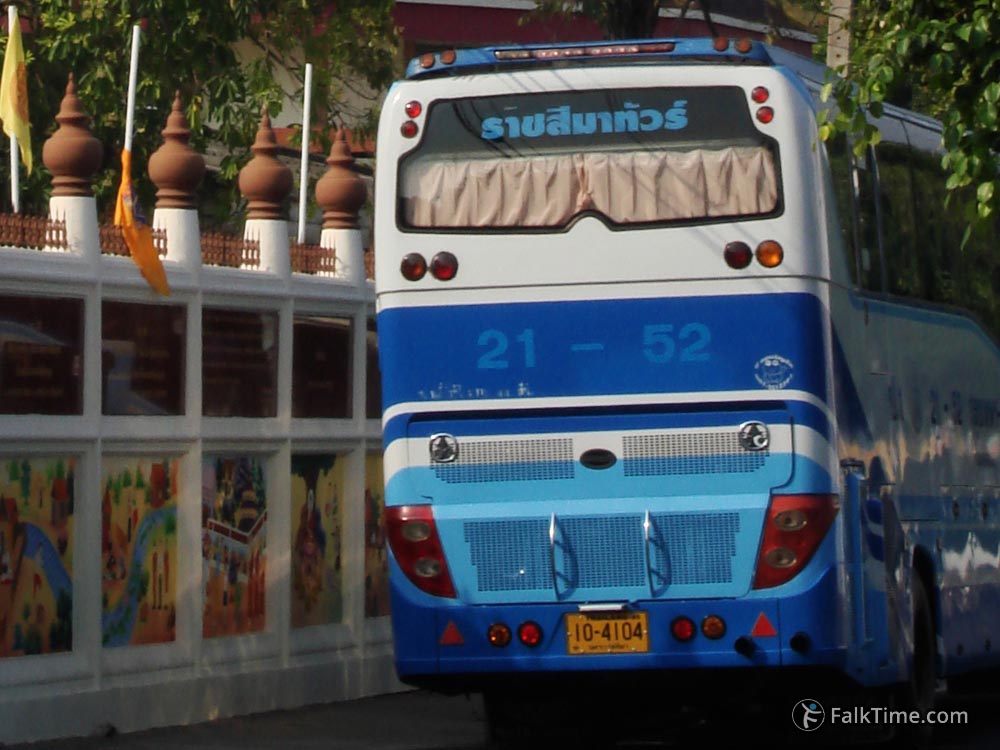
Minibuses (vans) in Thailand
Minibuses are a kind of alternative to big buses. They are air-conditioned and comfortable unless there will be too many passengers with luggage (it is stored in cabin, so there’s a high risk that your suitcase will be at your feet).
Minibuses are common on routes where one can not gather enough people for a bus, but high frequency of transport is needed (f.e. Bangkok – Cha Am / Hua Hin). Also minibuses are used for any excursions or visa-runs (f.e. to Cambodia).
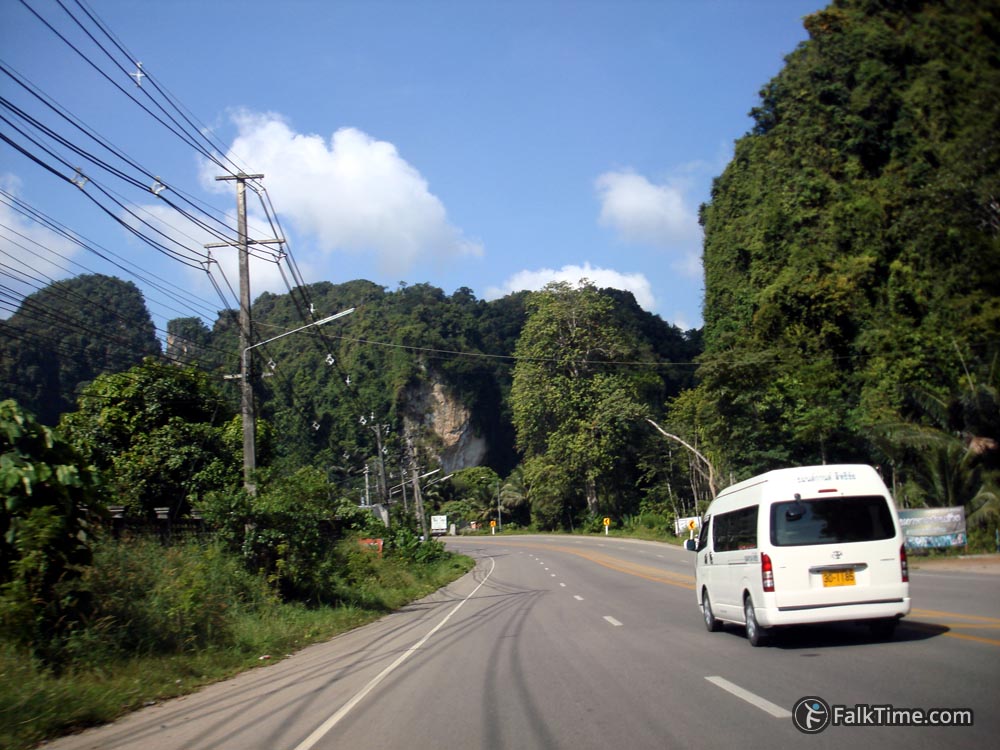
Taxi as intercity transport in Thailand
You can hire a taxi for intercity trip in Thailand. Just haggle with a driver. Usually there’s a sheet of paper with prices (per distance) in a pocket behind front seat of any taxi. In my opinion this is the maximum that you should pay for a ride, as I usually pay at least 100 THB less than it was listed. Details about city trips and rates are here.

Intercity songthaews
Intercity songthaew is a short distance public transport, as it would be hard to spend there more time. Like intra-urban songthaews you should stop it with hand. Both types of songthaews you may hire as a taxi (if there are no passengers). How to use songthaew read in article about intra-urban transport.
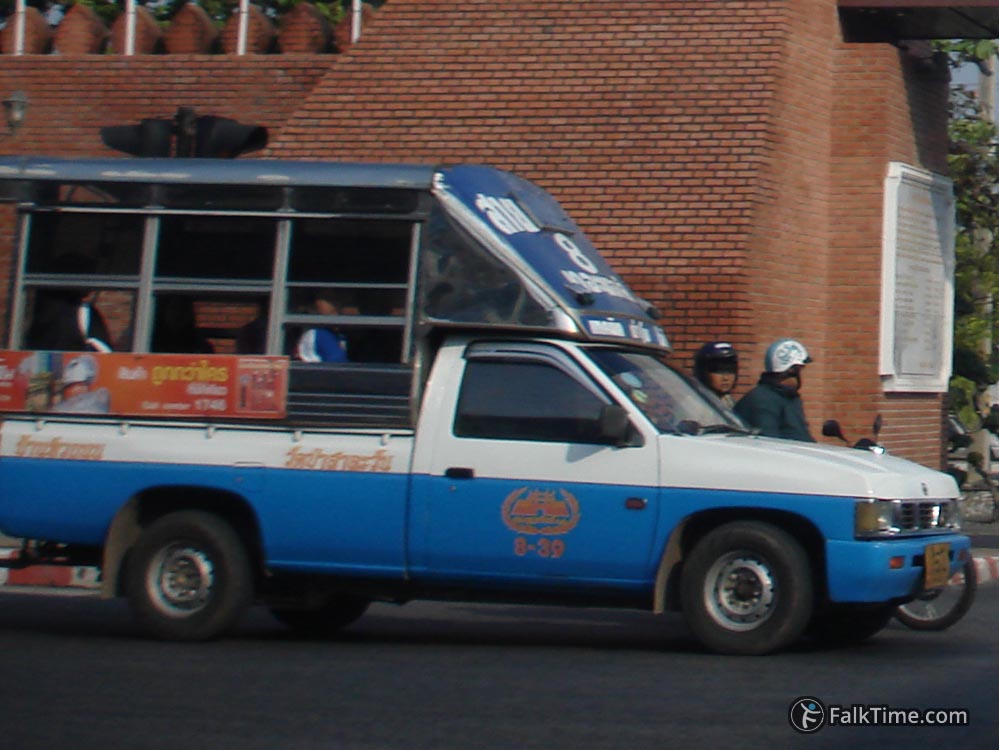
Maritime transport in Thailand
Ferries that connect islands with mainland are the biggest part of intercity public water transports in Thailand. Cost of ferry tickets is generally quite low. Types of ferries in Thailand:
- For cars and passengers.
- For passengers only (usually double-deck ships, sometimes speed boats for higher price).
- Long-tail boats for short distances.
All kinds of boats (speed boats, long-tail boats etc) can be hired as a taxi to reach islands with no regular transport or to use them for excursion / entertainment.
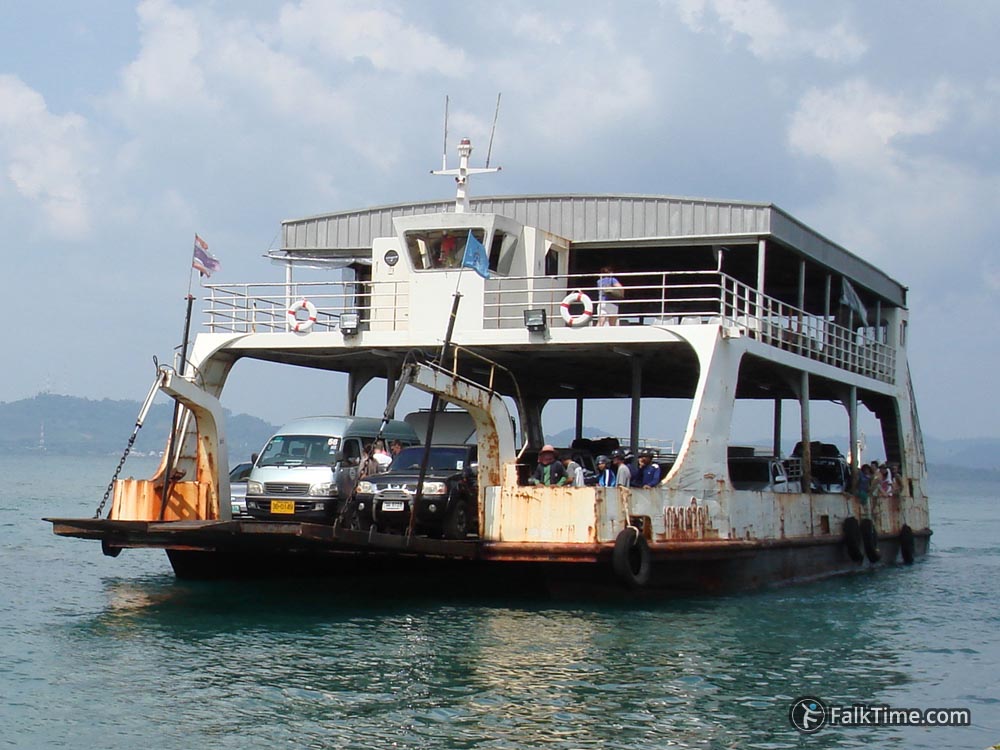
I would highly recommend putting the life vest on while using any means of water transport in Thailand. Or at least hold the life jacket in your hands. As sometimes the amount of life vests at the ship can be less than the amount of passengers. No matter how skilled you are in swimming, no one knows how much time you’ll spend in water until you are rescued.
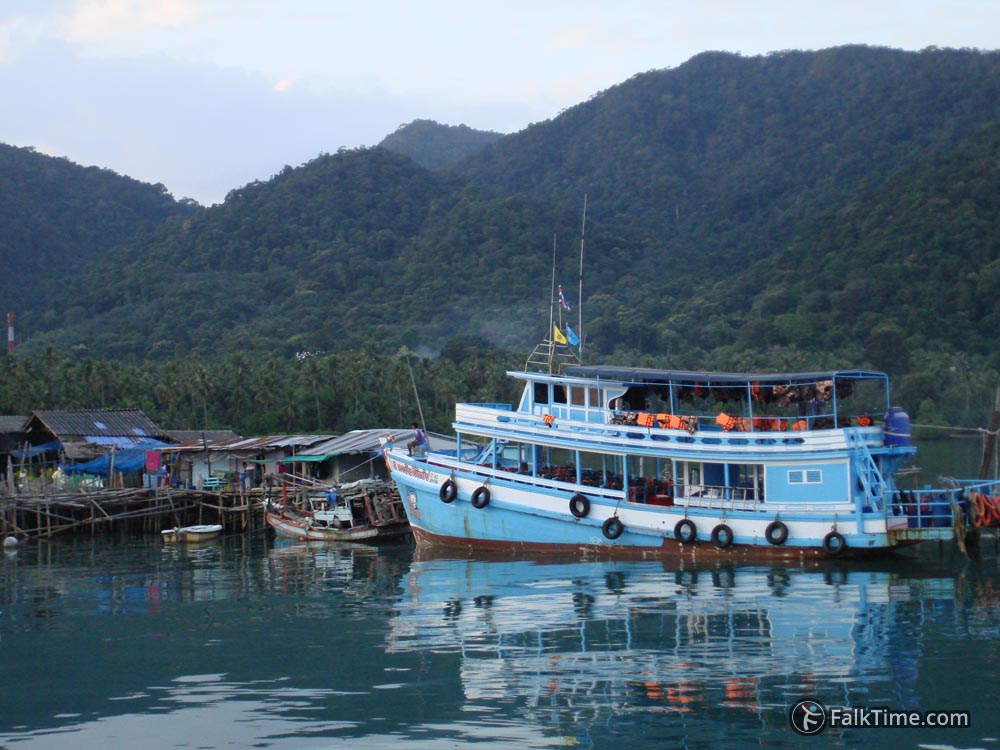
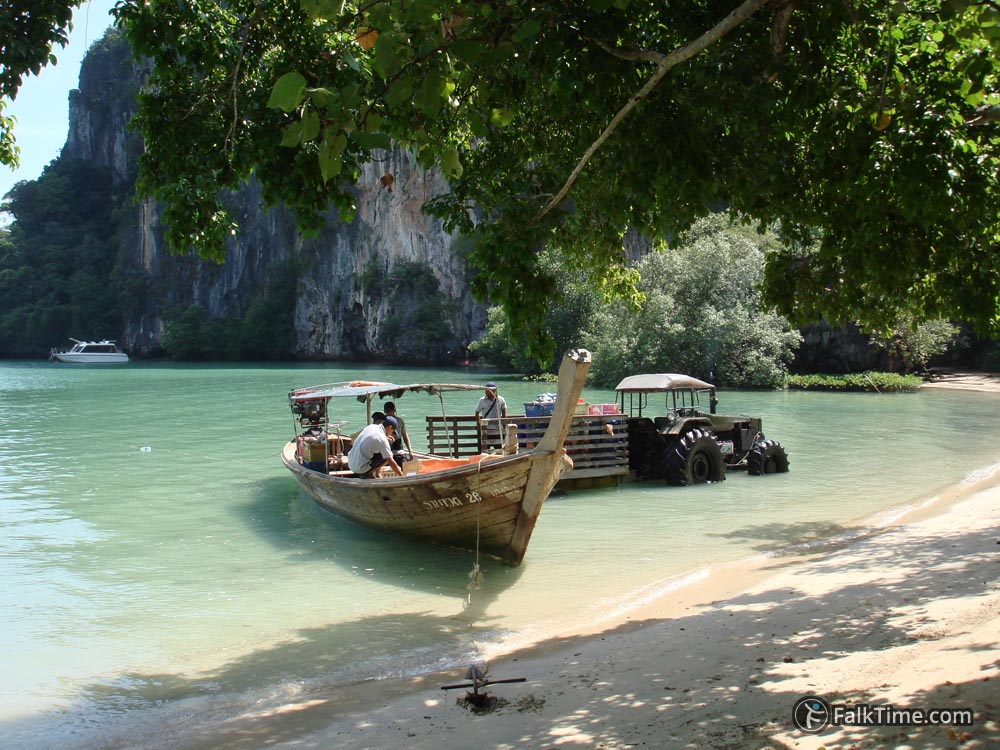
Hitchhiking in Thailand
Hitchking in Thailand is possible, but either you need to know Thai language or the driver should speak English. I’m not into hitchhiking – I can give a ride, but I feel myself uncomfortable, when I can’t thank the driver for a ride.
Nevertheless, I had my small experience of hitchhiking in Thailand – who would have thought that at 5 p.m. (~70 km. from Kanchanaburi) there would be even no private taxi around. Locals brought us to a checkpoint and a guy that was working there started catching a car for us.
After 15 min. a pickup stopped and people agreed to give us a ride. When we came closer, they were so surprised to see European face and they were sure that I will refuse, ‘cause the only free places were in open trunk (of course I didn’t). When we left pickup in Kanchanaburi I wanted to pay for a ride, but Thais refused.

